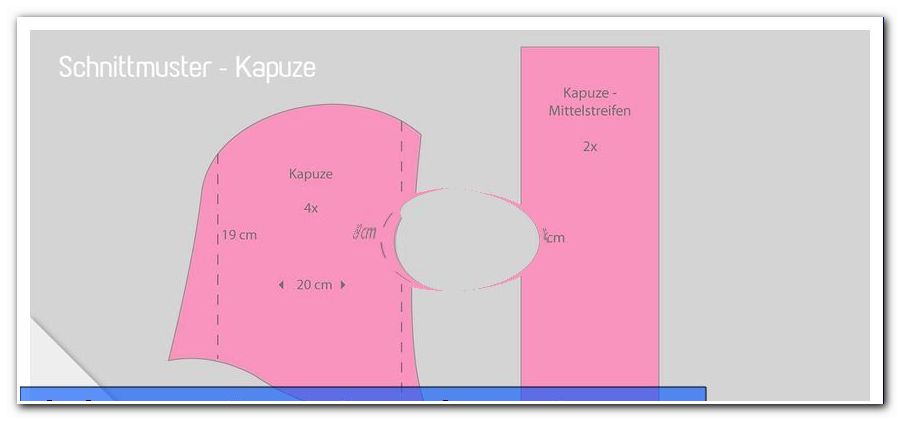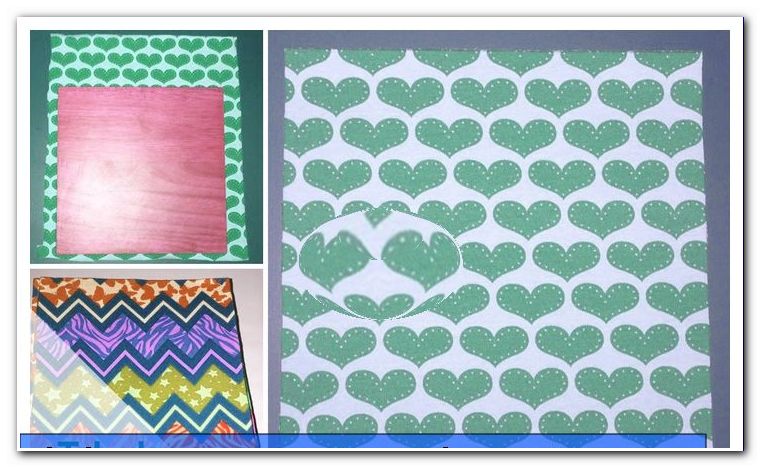Sewing a skirt - Instructions and patterns for a culotte

- material selection
- patterns
- Sew on trouser skirt
- variations
- Quick guide
With us it is not only in the summer "off to the south!" Even if it has minus degrees, you need airy clothes - on holiday where it is cozy and warm. We are going on holiday next week and my superlight favorite pants have unfortunately already become obsolete, so I would like to quickly sew a culotte, a pants skirt.
The Culotte is a mix of pants and skirt, which is usually worn in 6/7 or 7/8 length. Today I'll show you how to make such a pair of pants without any pattern. Thus, the pattern is already there. In the variations at the end I bring a few ideas for additional features and modifications.
Difficulty level 1/5
(this manual for a culotte is suitable for beginners)
Material costs 1-2 / 5
(depending on choice of fabric and length per pants skirt about 10-30 euros)
Time required 1.5 / 5
(depending on experience and accuracy about 60min per pants skirt)
material selection
The approach presented here (it is not a real pattern in the traditional sense) is just as suitable for woven as for knitwear. For woven goods, however, you also have to calculate more hem because it also needs to be serged and hemmed.
In any case, you should choose a light, airy fabric, so that the pants fall nice and not too much. I opted for black modal jersey, because I've been thinking for a very long time to use it to sew a pair of trousers as a basic piece that suits everything. Modal is a very fine and thinly knit fabric, which is also very slippery. But with a top feed foot or a Teflon coating, it can be sewn excellent.
Tip: Even muslin (actually double gauze) can be processed into a culotte pants skirt. This fabric was actually used for the so-called "burp cloths" and long before as a cloth diaper for babies. Meanwhile, he has blossomed into a full-fledged clothing fabric for young and old and is especially popular for hot days.
patterns
There are, as I said, for this manual no conventional pattern. But no fear! I guide you step by step through the individual phases and you want to sew after the completion of your first culotte determined even more pants skirts!
My pants skirt should have the typical length for this cut. My discarded favorite summer trousers go down to about 5 cm below my knees and has leg cuffs. I take that as a template. The required piece of fabric for my purposes is about 1.10 m. You can vary the length depending on your height, desired length and waist size. Cut something too long too short. It is always easier to make a wider hem or to cut off a piece than to extend the pants later.
Place your fabric right side together (ie with the "nice" fabric sides facing each other). Fold your pattern trousers in the crotch and place them on the fabric at the bow. My pants skirt should be a bit longer than my old pants, so I put them four to five inches from the edge away.

Tip: If you want to hem the pants, add the appropriate length.
Now cut both fabric layers along the middle seam of the pants at a distance of about four centimeters. For the rest of the material cut open the middle. Now put the pants on the other side.

Tip: For a narrower culotte, fold the old trousers over to the other side. If the pants skirt is to continue, leave a few centimeters between them.
On the other side also cut the crotch about four centimeters behind.

The pants are now mirrored. This is not true of course and will not sit so exactly, so cut on one side again about 3-5 inches away, because the front is always a little shorter than the back.

Sew on trouser skirt
Now stick together or staple both layers in both bows and then sew both fabrics together. (For non-stretchable fabrics with a single or triple straight stitch, for stretchable fabrics with a zig-zag or overlock seam.

Apply the pants so that the seams come together. At this point you can already see what the pants will look like.

First insert or clasp the seams in the crotch, then the two leg ends.

Tip: Beginners can also distribute multiple clips over their length if you are unsure.
As you can see, a bow has now been created on the underside, between the two legs. Sew it now too. Then apply the pants. Put on the trousers and fold down the waistband part to the required height.

Tip: For beginners, it is easier to mark here the upper bow with clips or pins, so that nothing slips when undressing.
The waistband is then cut along the line. Here you can also make height adjustments to the federal government. If it is too high, simply cut back to the required height.

I want to wrap in the waistband a rubber. To do this, I first measure my body circumference at the height at which the highest point of the pants should then sit. With a low waistband this may be below the belly button. Higher leagues often go far beyond the navel. Depending on the strength of the rubber band, I now calculate 0.7 to 0.9 times and add two centimeters of seam allowance.

It's particularly quick: Put the rubber around your body, at the same height as it should be later, and tighten it so that it is slightly taut but does not become uncomfortable or even cut.
First, I sew the rubber together at the ends (overlapping) several times. Then I turn the waistband so that the two seams inside come exactly to each other.

Then I put the rubber ring so that it is enclosed from all sides. Then I take the upper pants skirt part and put it coming from the bow side, through the collar, so that all the edges are gleichauf.
I align the seams of all three layers front and back.

Tip: Work in layers: first the outside of the waistband, then the elastic band, then the inside of the waistband and then the upper trouser edge. And always get stuck.
This is how it looks when the seams are pinned on both sides. I always mark four fixed points when sewing the Federal. Of course, if you are unsure, you can add more staples or needles.

Now I just have to sew through all three layers around and my first culotte is ready!
If you are using woven fabric, you will now have to sew on both trouser legs and trim if necessary.

And your culotte is ready! Have fun sewing!
variations
As in my tutorial on the wrap skirt can be installed in the culotte seam pockets. For this, however, you must divide the fabric in the middle so that the sides of the seams. The seam pockets are then fitted into these seams before sewing them together. These bags are super easy to implement for beginners and wear as good as not at all. They are not visible from the outside at many cuts, but I would still keep them in a suitable fabric color, so that nothing flashes out. I always find bags handy because I do not like running around with a handbag. Much too big the danger on vacation to leave them where. So I have the most important items always directly on the body, no matter if skirt, pants or pants skirt.
If you do not have a rubber band at home, or just do not "dare", then just take cuffed fabric for the waistband and sew on a cuff, as in my guide to the subject. At length you need your body circumference from where you want the cuff to sit. Calculate this value 0.7 times and add two centimeters of seam allowance. You can choose the height freely, but it should be calculated twice when cutting and here again you need twice the seam allowance. When you sew on the cuff, you need to stretch it until the other fabric stops creasing.
For a playful look, you can add ruffles, lace or a flounce to the bottom of the legs. Also embroidery, plots and other ornaments can be attached to your mood.
Culottes made from premium fabrics are particularly elegant and elegant. Even transparent fabrics can be sewn. On the beach one gets to see the swimwear underneath sooner or later anyway. If you do not want to do that, you can still be inferior with an opaque material. Here I can only recommend courage to samples. Very nice effects often arise when two different patterns meet, one of which is (partially) transparent.
For the final touch you can also wrap a strip of the fabric around your holiday hat and thus create a well-rounded outfit. For the youthful looking look, you braid the ribbon skillfully into your hair and the hairstyle fits perfectly to the pants skirt.
Quick guide
1. Place fabric right to right, put on trousers
2. Cut the trouser skirt
3. Cut off 4cm from the crotch arch at the front
4. Sew both crotchets together, then the leg arch
5. Turn trouser skirt and tighten, fold over the waistband and fix
6. Cut off the waistband, turn to the right and fold
7. Measure the rubber band, close to the ring and insert into the waistband
8. Sew on the waistband at the culotte
9. Maybe still hemming
The twisted pirate




